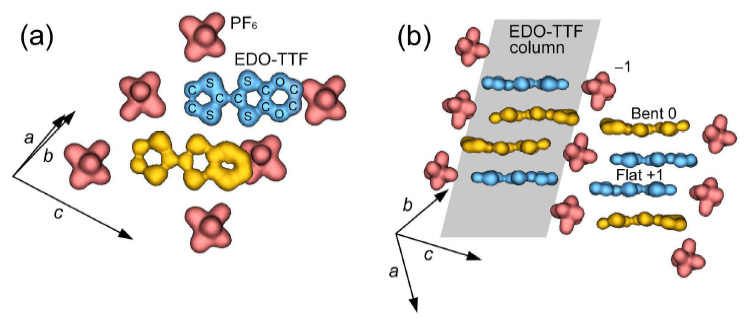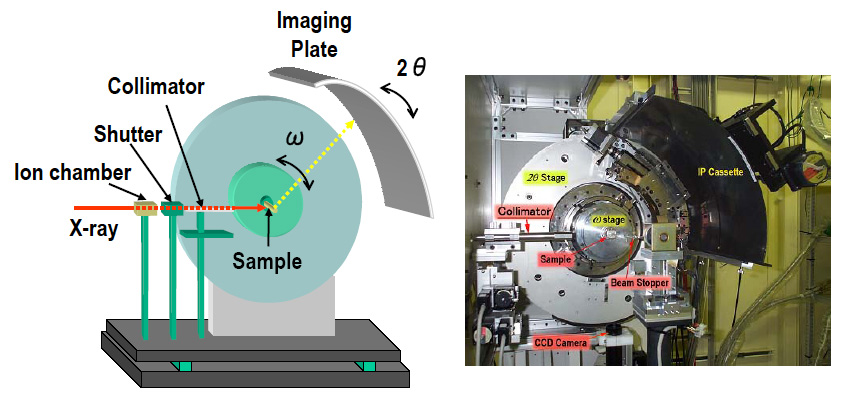Charge ordering pattern in organic conductor (EDO-TTF)2PF6
Inquiry number
SOL-0000000962
Beamline
BL02B2 (Powder Diffraction)
Scientific keywords
| A. Sample category | organic material |
|---|---|
| B. Sample category (detail) | metal, alloy, insulator, ceramics, solid-state crystal, organic material, crystal |
| C. Technique | X-ray diffraction |
| D. Technique (detail) | powder diffraction |
| E. Particular condition | low-T (~ liquid N2) |
| F. Photon energy | X-ray (4-40 keV) |
| G. Target information | chemical bonding, molecular structure, structure analysis, crystal structure, structural change, function and structure, charge density, phase transition |
Industrial keywords
| level 1---Application area | storage device |
|---|---|
| level 2---Target | |
| level 3---Target (detail) | |
| level 4---Obtainable information | crystal structure, valence |
| level 5---Technique | diffraction |
Classification
A80.32 organic material, M10.20 powder diffraction
Body text
Powder diffraction is a powerful technique to study crystal structures. Using this technique, one can measure structural parameters such as lattice parameters, atomic positions, etc of crystalline materials. By using synchrotron radiation one can also obtain charge density level structures closely related with physical properties as well as structural parameters. The figure shows charge density distributions obtained by analyzing diffraction data of (EDO-TTF)2PF6having the ultra-fast photo sensitivity. These data reveal the charge ordering pattern in the insulator phase.
Fig. Charge densities of (EDO-TTF)2PF6 at charge ordering phase.
[ S. Aoyagi, K. Kato, A. Ota, H. Yamoshi, G. Saito, H. Suematsu, M. Sakata and M. Takata, Angewandte Chemie International Edition 43, 3670-3673 (2004), Fig. 2(b),2(d),
©2004 Wiley VCH ]
Source of the figure
Beamline Report
Page
50
Technique
Powder diffraction using synchrotron radiations a powerful technique to study crystal structures. The technique is applicable to materials together with charge disproportion by phase transition and provides knowledge about charge ordering patterns.
Fig. A large Debye-Scherrer camera.
Source of the figure
Presentation material for Beamline Report
Required time for experimental setup
1 hour(s)
Instruments
| Instrument | Purpose | Performance |
|---|---|---|
| Large Debye-Scherrer camera | Powder diffraction | Camera radius: 286.48mm, Temperature: 15-1000K |
References
| Document name |
|---|
| S. Aoyagi et al., Angewandte Chemie International Edition, 43 (2004) 3670. |
Related experimental techniques
Single crystal structure analysis
Questionnaire
The measurement was possible only in SPring-8. Impossible or very difficult in other facilities.
This solution is an application of a main instrument of the beamline.
Similar experiments account for more than 30% of the beamline's subject.
Ease of measurement
Middle
Ease of analysis
Middle
How many shifts were needed for taking whole data in the figure?
Two-three shifts


